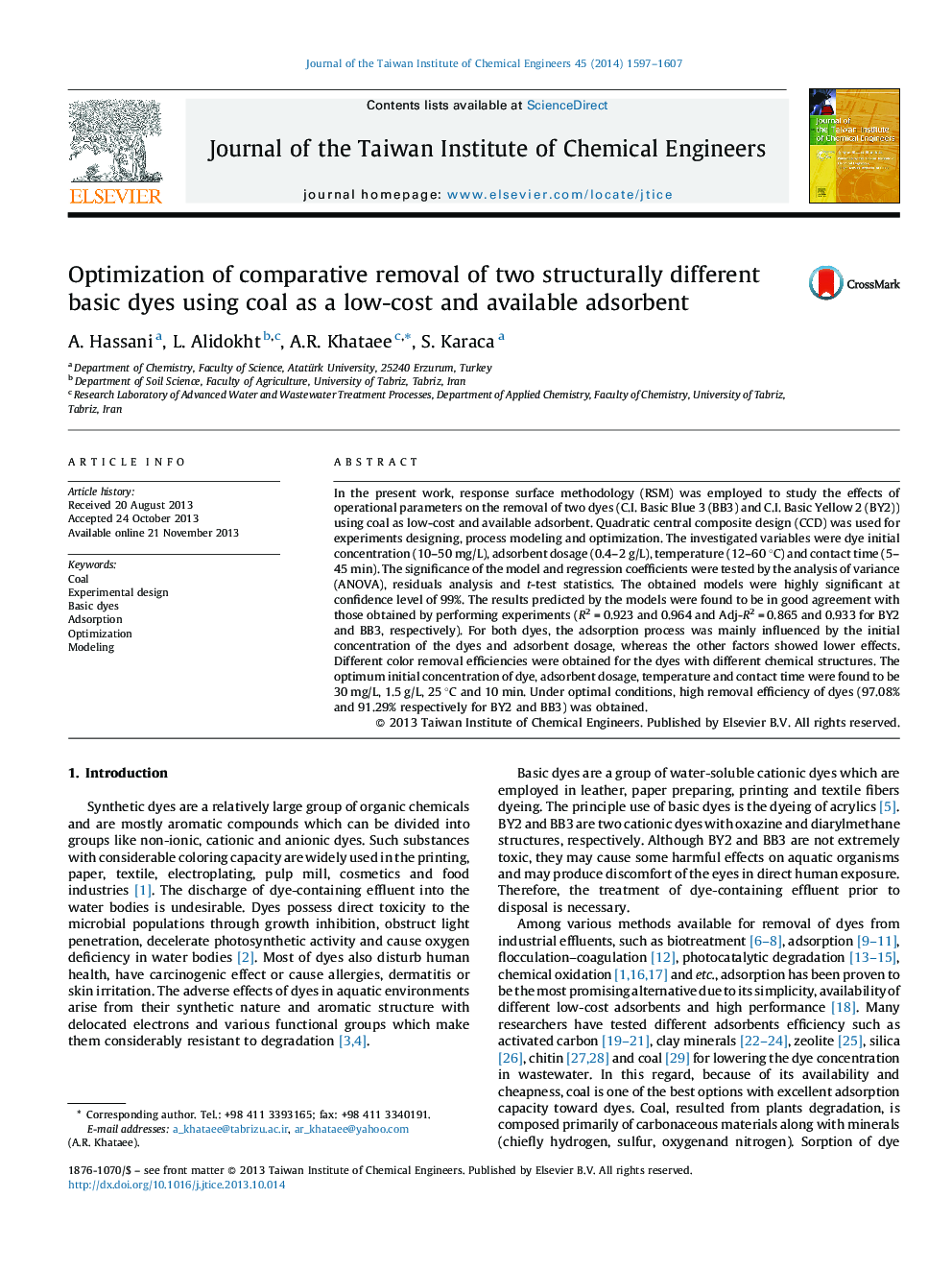| Article ID | Journal | Published Year | Pages | File Type |
|---|---|---|---|---|
| 690918 | Journal of the Taiwan Institute of Chemical Engineers | 2014 | 11 Pages |
Abstract
In the present work, response surface methodology (RSM) was employed to study the effects of operational parameters on the removal of two dyes (C.I. Basic Blue 3 (BB3) and C.I. Basic Yellow 2 (BY2)) using coal as low-cost and available adsorbent. Quadratic central composite design (CCD) was used for experiments designing, process modeling and optimization. The investigated variables were dye initial concentration (10-50 mg/L), adsorbent dosage (0.4-2 g/L), temperature (12-60 °C) and contact time (5-45 min). The significance of the model and regression coefficients were tested by the analysis of variance (ANOVA), residuals analysis and t-test statistics. The obtained models were highly significant at confidence level of 99%. The results predicted by the models were found to be in good agreement with those obtained by performing experiments (R2 = 0.923 and 0.964 and Adj-R2 = 0.865 and 0.933 for BY2 and BB3, respectively). For both dyes, the adsorption process was mainly influenced by the initial concentration of the dyes and adsorbent dosage, whereas the other factors showed lower effects. Different color removal efficiencies were obtained for the dyes with different chemical structures. The optimum initial concentration of dye, adsorbent dosage, temperature and contact time were found to be 30 mg/L, 1.5 g/L, 25 °C and 10 min. Under optimal conditions, high removal efficiency of dyes (97.08% and 91.29% respectively for BY2 and BB3) was obtained.
Related Topics
Physical Sciences and Engineering
Chemical Engineering
Process Chemistry and Technology
Authors
A. Hassani, L. Alidokht, A.R. Khataee, S. Karaca,
